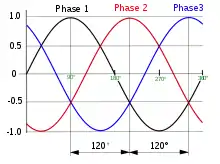Trigonometry is the study of the properties of triangles.
- "Tri" is Ancient Greek word for three,
- "gon" means angle,
- "metry" measurement
Together they make "measuring three angles of a triangle".
If you know some facts about a triangle, such as the lengths of its sides, then using trigonometry you can find out other facts about it. If you know the lengths of sides then you can find what the angles are. If you know the length of one side and of two of the angles, then you can work out what the remaining angle is, and also what the lengths of the other two sides are.
As a consequence the Ancient Greeks were able to use trigonometry to calculate the distance from the Earth to the Moon.
Starting Learning Trigonometry
One of the first things we learn in trigonometry is how to calculate what the third angle in a triangle is when given the other two angles. For example, in a triangle if two of the angles are then the third angle must be too.
However, if we're instead told two lengths, say 7cm and 10cm, and if we're not told anything about the angles, then the third length has a range of possibilities. It could be 5cm. It could be 15cm.
To calculate lengths we start out by examining a right-angled triangle, i.e. one where one of the angles is .

We'll be using right-angled triangles a lot.
In a right-angled triangle we can work out the length of the longest side if given the lengths of the two shorter sides. In a right-angled triangle the lengths of the sides have a particularly nice relationship to each other. The formula for this relationship is written:
How you use this formula to calculate the third side when you know two of the sides in a right-angled triangle is explained in the page on the 'Pythagoras' Theorem'
What if the triangle isn't a right-angled triangle, though? What if it doesn't have a right angle?
More complex triangles can be built by joining right-angled triangles together. What we learn about right-angled triangles enables us to work with other kinds of triangles too. Trigonometry and trigonometric functions can also be used with more complex shapes such as squares, hexagons, circles and ellipses. Ultimately the most important mathematical tools we have for measuring the universe are based on the study of the mathematics of triangles.
Trigonometry is a fundamental step in your mathematical education. From the seemingly simple shape, the right triangle, we gain tools and insight that help us in practical and theoretical endeavors. The subtle mathematical relationships between the right triangle, the circle, the sine wave, and the exponential curve can only be fully understood with a firm foundation in trigonometry.
Applications

Trigonometry is a branch of mathematics concerned with the lengths of the sides and size of the angles of triangles. Because many physical questions can be framed in terms of triangles, trigonometry has found wide use in the physical sciences and engineering.
Trigonometry is needed in surveying and architecture since relationships between lengths and angles in triangles are used directly.

Trigonometry is also used in electrical engineering. The functions that relate angles and side lengths in right triangles turn out to also be useful in expressing how AC electric current varies with time.